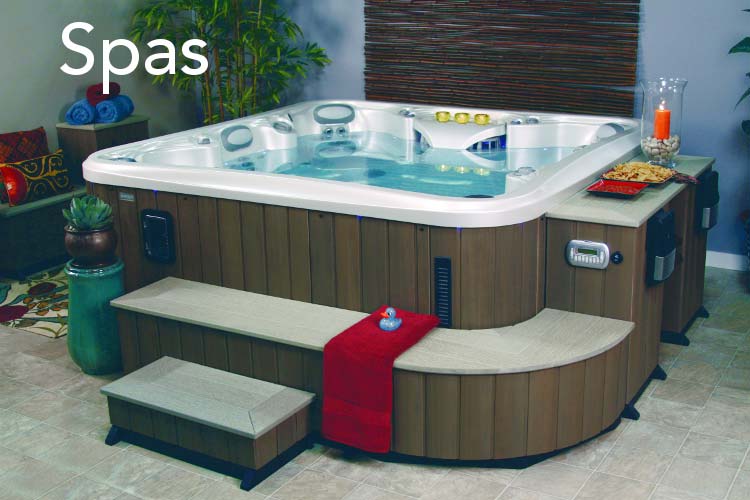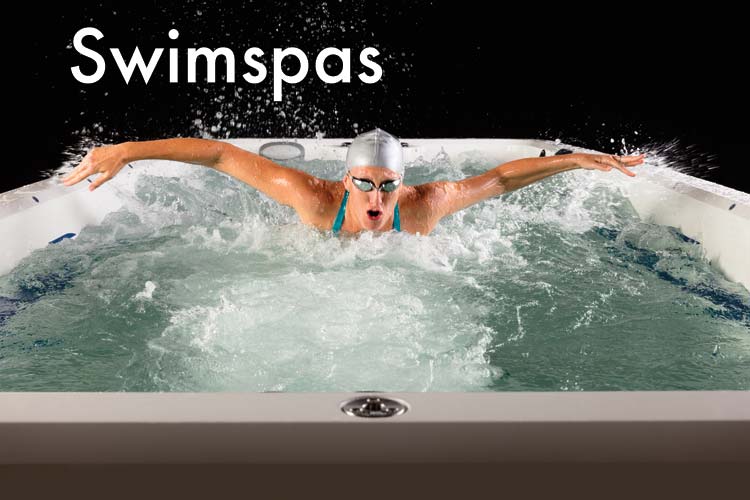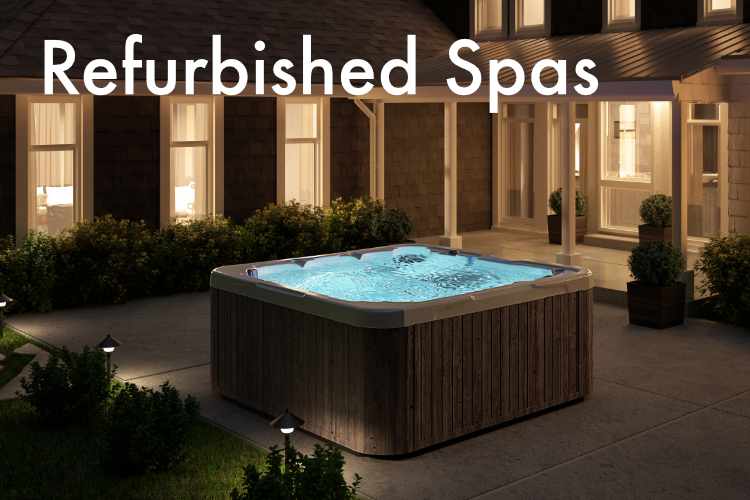What to know if you are thinking about buying a spa
Water and people. It’s been a winning combination since our ancestors crawled out of the primordial soup. There’s just something about immersing yourself in water that heals the soul. And when that water is hot and full of bubbles, that’s when the magic happens. Hot tubs can be used for relaxation, for pain relief, for connection with loved ones and for entertainment. That’s why hot tub owners are usually the first to tell you how pleased they are with their investment. In fact, 72% of hot tub owners use their tub two to three times a week.
Choosing, one, however, can be a daunting prospect. What is the right size? Indoor or outdoor? Portable or built in? What features are necessary and what are just bells and whistles? How will you maintain it? Well, here is a handy guide that will hopefully set you on the right path to finding your perfect spa.
How will I know which one is for me?
How many people?
The number of seats in the spa is one of your first decisions. Are you just planning on using the spa for personal therapy or are you looking to have the party spa? Most spas seat 6-7 people, but there are spas for one, two or as many as ten people. If you just plan on spending time in it with your partner, less seats will give you more room for a therapy lounge.
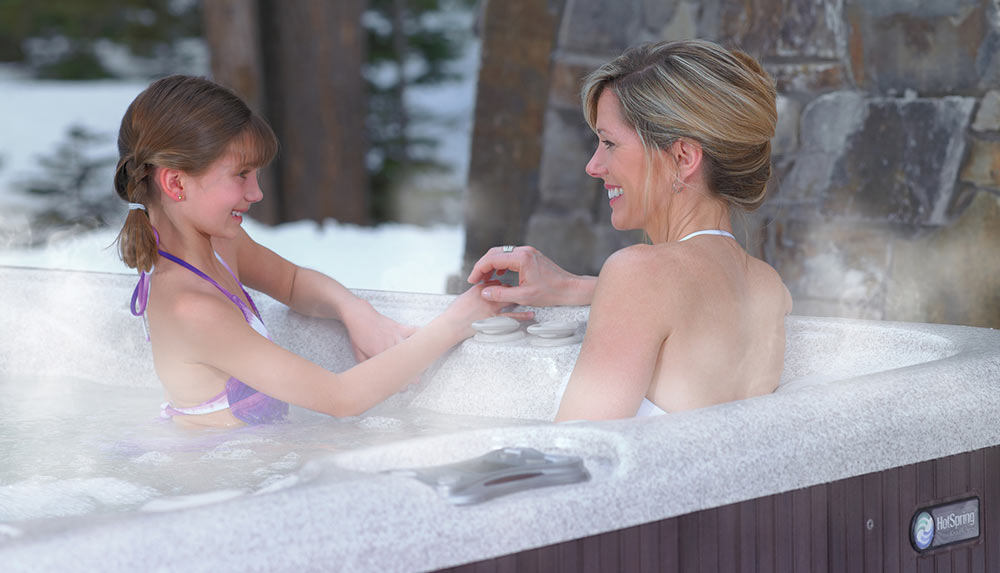
How many jets?
Most hot tubs have about seven jets per seat. These jets can be used to help manage pain and/or discomfort especially for those with joint pain from arthritis, sports and lower back pain, which can be a result of long hours in office chairs and driver’s seats. Hot tubs can improve certain symptoms of diabetes, namely plasma glucose and glycosylate hemoglobin. The more jets you have per seat, the more extensive your hydro massage. However, the size of the jets and the power of the water behind them matter too. Often you will see larger jets in areas where deep tissue massages concentrate and smaller jets on extremities which are more sensitive. A test soak is a great way to ascertain whether the hydro-massage you are getting is the one you are dreaming of.
How much space?
Most spa models range from 7’ X 7’ to 9’ X 7’. Most are square however round tubs are also very popular, especially the ones with ergonomically molded seats. Smaller hot tubs seat one to two people and hold about 100 – 200 gallons. Your typical 7’ X 7’ spa will hold about 400 gallons and will fit four to six people depending on the seating arrangement. The largest tubs and swim spas can hold 500 to 1800 gallons.
Most spas are about three feet deep. If you are exceptionally tall or exceptionally short, a wet test is crucial to make sure you will be completely immersed and not overwhelmed.
You’ll want to take into consideration where you plan to install the spa before deciding on the size of your tub, especially if you plan on inserting the tub into an existing deck. If your tub is free standing you will need to leave space on the sides for access. Also if you plan on having a cover lifter installed (which you should consider as lifting the cover by hand is sometimes difficult and tedious) you typically need to leave 18” to 24” clearance behind the spa depending on the model lifter you choose. Should you choose to install the spa within a deck or patio you may want to check with your local municipality as permits can be required.
Show me the Money
Hot tub prices can vary widely, and it’s sometimes hard to tell why one tub is priced so much higher than another. One of the biggest factors in this is where you purchase. A box store or membership warehouse may have a great looking tub for a temptingly low price; however, your experience after purchase will almost certainly not include dealer support and an extended warranty. The quality is often deceptive too as inferior materials and equipment is often used. One of the key advantages of buying a spa from an authorized dealer is surprisingly enough your sales associate who can help you understand the various features and point out important issues you may not have thought of. Plus, it’s hard to do a wet test in the middle of a warehouse store.
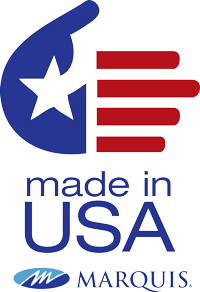
Dealer-supported tubs will often run 30% to 50% more than big box models with that you will often get better insulation, thicker and stronger shells, better plumbing connections, tighter seals and sturdier frames which will absolutely lower the energy cost of running your spa and save you expensive repairs down the road. Not only that, your dealer will often provide your warranty follow ups, so you will know that the person they are sending out to fix your spa is reputable and knowledgeable about how your spa works.
On the average, a 2 to 3 person model spa will usually run between $3000 to $5000. A 5 to 7 person tub will run $5000 to $12000, and an 8 to 10 person spa will be about $9000 to $20,000. In-ground tubs will probably be a bit more expensive, from $6 to $20K.
Aside from quality differences, the features you get are the main factor in the cost of the tub.
Energy efficiency
Your average tub will cost between $25 and $100 per month to run. A cheaper model with less insulation will cost you in energy costs for as long as you own your spa; so saving a few bucks on the front end is not always wise. For example, saving $1500 on a box-store tub will not make up for ten years of $100+ energy bills, will it?
Warranty
Most box store tubs have a one year warranty. Many Dealer-supported tubs have a warranty of up to ten years. A good warranty will probably save you thousands of dollars on the back end.
Special features
Water Purification Systems
Back to the primordial soup, which is what your spa will become if regularly used and left untended. Spas can be a breeding ground for bacteria, fungi and viruses such as E. coli, mycobacteria and pseudomonas aeruginosa. It is vitally important that these not be allowed to grow and thrive in your spa; which is why most people use a system of sanitizer, shock and filtration to put a stop to them before they become a problem.
However, the hot tub industry has made some remarkable breakthroughs that not only do a better job of sanitizing your spa; they make it easier on you.
Salt Systems
Salt systems have exploded the hot tub market and for good reason. This is how they work: A low voltage electrical current is discharged inside a salt cell which converts the salt (which is added to the water) into chlorine. The result is a constant low level of sanitizer which prevents bacteria issues before they have time to develop into a stinky problem. Salt systems also have an added benefit in the quality of the water; salt water is softer, silkier and better for the skin. Salt systems are better for the environment too since will not have to buy multiple bottles of harsh chemicals which will only end up in a landfill. Salt systems run between $175 and $1300, depending on the quality of the system. Some salt systems even add salt for you where manually added salt will run you about $16 per bottle per 100-125 gallons. Salt is then added with each fill-up and may occasionally need to be topped off due to evaporation.
Ozone systems
Ozone systems are not meant to be a primary sanitation system, more of a sidekick. What it does is to break down the waste material that can hang around spas like deodorant, cologne, saliva, detergent, shampoo, lotion, urine and sweat. It can save you up to 25% in the use of chemicals.
Filtration System
Filters are one of the most important components of your spa and the most frequently replaced. It can’t be said enough; the better your water is filtered, the more you will enjoy your spa. Filters catch the bacteria and biological waste that is left by humans and keep them out of the spa water thus preventing them from causing issues down the road.
Filters are attached to an intake valve which draws the water through them trapping debris. They are cylindrical objects made of various materials. The filter media (what the filter is made of) along with the amount of water filtered per minute by your pumps determine how effective the filtration is. Filters are sized according the square footage of media they contain.
Here are the most common types of filters:
-
Premium Media: Made of high grade polyester; this media filters up to 30% more effectively than standard filter media.
-
Antimicrobial End Caps: This is a newer option for filters which prevents bacteria, mold and mildew from collecting along the ends of the filter.
-
Antimicrobial Filtration Media: The media itself is treated with an antimicrobial material which inhibits bacterial growth keeping odor under control while extending the filter life.
-
Ceramic Filters: Ceramic filters are a new development in the hot tub industry although they have been used for water treatment for several centuries. Ceramic filters have a longer life than most filters unless they are broken however they can sometimes re-contaminate the water as the flow is so much lower than paper or polyester media. Some Ceramic filters are advertised as dishwasher safe for cleaning.
-
Cloth Filters: A few spa lines use cloth filters set up around plastic frames. The advantage of this is that they are machine washable and easy to clean however they do not have as an extensive filtration area and must be replaced often.
Hydrotherapy jets
As mentioned earlier, jets vary in size and features; each affecting the type of massage you get. Also important is the power of the water behind the jets which is why wet tests are a great idea before buying a spa. Many spas have lots of shiny jets and lights but if the jet doesn’t have flow behind it you might be disappointed.
Here are the most common types:
-
Rotary Jets: These have a spinning, powerful jet which provides targeted relaxation for specific muscle groups. Some rotary jets have two or three streams that spin however most have one stream.
-
Relaxation Jets: These provide either high or low impact therapeutic massage using a swirling design that relaxes tired muscles and helps with body aches.
- Pressure Point Jets: These provide deep tissue massage for specific body areas such as neck, shoulders, back, calves and feet. Pressure point jets are very effective in relieving arthritis and/or muscle injuries.
- Footwell Jets: Many spa companies offer larger than normal jets on the floor of the spa specifically for foot massages. Sometime these jets can accommodate more than one person at a time.
Often spas can be customized to have the specific jets that you need and many times it is possible to replace your jetface and upgrade your spa with the newest jet types. Jets do break on occasion and can be replaced for $12 to $40 each.
Covers and Lifters
Covers are a crucial part of your spa system, as they keep out debris while the spa is unused and seal in the heat saving you in energy costs. Cover quality can vary widely.
Spa Covers
Most cover cores are made with fiberglass combined with an industrial-grade Styrofoam insulation then vacuum sealed with a plastic and covered with a marine grade vinyl. They are usually available in a wide range of colors to match your spa skirt or your deck. Many include mildew resistant undersides. Many spa dealers will include the cover in the cost of the spa, but some do not. Some will offer an upgraded cover, with thicker insulation or higher quality materials. There are custom covers too that can be ordered to match your patio furniture and some that are built to withstand harsh climates. Covers generally run $300 to $500, depending on the size and quality; though the custom covers can run higher than that. Take care of your cover using a specialized vinyl protector and your cover can last for years. You’ll know it is time to replace when the cover integrity is compromised as it will begin to take on water vapor and will become much heavier.
Cover lifters
Spa covers can weigh between 50 and 75 pounds and can get tiring pulling it on and off every time you get into the spa; not only that, who wants their cover to sit on the ground collecting dirt while using the spa? Cover lifters offer easy removal using levers, pneumatic pistons or gas shocks. A cover lifter will suspend the cover on the back side of the spa. You’ll want to take the space around your spa into consideration when picking a cover lifter as they need a certain amount of space on the sides and back side. Some can operate with as little as 6-14 inches in clearance behind the spa but most need more. Cover lifters can range between $150 and $400.
Lighting and sound
Here we come to the really fun stuff and the most common accessories for maximizing your enjoyment of your spa. They are sometimes known as “entertainment packages” and can often be operated by remote while sitting in the tub.
Lighting: Is there anything more soothing than water and light combined? Hot tubs manufacturers have made major breakthroughs with LED lighting. Some hot tub manufactures offer bright colorful hue-changing light technology. Some offer lights around the cabinet or safety lighting with the spa. You’ll probably pay anywhere from $150 to $300 per feature and about $30 per bulb when it needs to be replaced.
Sound: Stereo components in spas used to be based on car stereos and were a lot more expensive. Now, most spas take advantage of your digital and streaming music collection through Bluetooth via your mobile devices and/or USB. Speakers are waterproof and some systems include waterproof subwoofers. For best results look for systems that offer Bluetooth and Wi-Fi capability. Your average sound system will cost anywhere from $200 to $900.

Exteriors
Hot tub cabinets or skirts make up the exterior of the spa and can have a very big impact on the look of your backyard. They can sometimes be customized to match your landscape or existing decking. They used to be made almost exclusively of wood but breakthroughs have been made in natural looking wood finishes and even layered stone.
Most of the best quality skirts are made from reinforced treated wood which resists mildew, mold and wood rot which supports the weight of the tub and adds to the beauty of the spa. Cabinets are generally included in the cost of the spa and replacement cabinets will run between $700 to $2000.
Spa Shell
The shell is the main interior surface of the spa; usually made of acrylic, backed by fiberglass for strength. They come in a variety of colors and textures from solid acrylic or marble/granite to even metallic. Granite or speckled patterns tend to show the dirt the least. Customized shells can be purchased and can range from $1800 to $3900.
What do you want out of your spa?
People have widely varying reasons for purchasing a spa so it important to determine what your wishes and goals are before you start looking
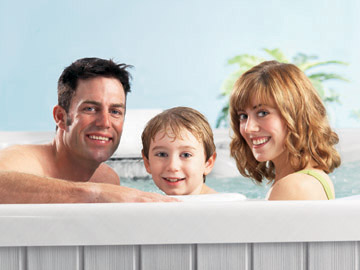
-
Family Time / Entertainment: Whether it’s a romantic hour in the tub with your partner or giggles and splashing with your kids or a long relaxing talk with visiting friends; nothing beats a hot tub for bringing people together. If entertainment is what you are looking for the most choose a tub with 6-8 seats. You can increase the fun with lights, cup holders and sound packages.
-
Hydrotherapy: The original reason the hot tub was invented was a father trying to ease the pain of his disabled son. Since then, hot tubs have made huge strides in hydrotherapy. Hot tub heat and jets provide relief from joint pain, arthritis and sports injuries. The hot water increases blood flow and reduces blood pressure. While the jets themselves soothe sore spots; muscles relax around inflamed joints decreasing lactic acid and kicking in endorphins for pain relief.
If hydrotherapy is your main goal or if you are an athlete looking to recover from your workouts; you’re going to want a tub that features no less than seven jets per seat. You also may want to consider a lounger or a double lounger as the hydro-massage is much more extensive in lounge seats.
Fitness
Did you know that your spa can not only help you recover from a workout; it can give you a workout. With optional accessories like training bands and rowing machines your hot tub can turn into an aerobic strength training workout machine aided by the buoyancy and heat of the water; you’ll be amazed at what your body can accomplish.
If fitness is your goal then the obvious choice is a swim spa, however with the proper accessories you can turn even a small 2-3 person tub into your own personal gym.
What’s trending
Spa manufactures are coming up with new features every day. Here are some of the more exciting recent developments:
Child Safety
Of course, every effort should be made to make sure that no young children play in or around the hot tub without adult supervision. In fact, the Red Cross discourages hot tub use by children under 5 years due to their bodies inability to cope with high temperatures. The Association of Pool & Spa Professionals advises parents who have children old enough to use a hot tub to limit their time to 5 minutes. Spa manufactures have responded with jump seats that can be purchased to prevent full immersion and shallow seats built into the spa. Measures have been taken to prevent drain entrapment for some time now. Covers are usually lockable which can prevent tragic accidents.
Automated Water Treatment Systems
If you want to make sure that your tub is sparkling clean every time you open it up; the best way to achieve that is to invest in an automated water treatment system. These systems monitor your water chemistry, your filtration and your sanitation system. The best systems are fully automated using meters and feed pumps to dispense liquid chemicals. Some systems can monitor water levels as well. As a result of having an automated water treatment system your water will always be clean, soft, silky and free from odor. Often, the only maintenance you will deal with is refilling the sanitizers weekly and changing your filter once a year.
Remote Control/Automation
There’s an app for everything these days and your spa is no exception. Many major manufacturers offer apps which allow you to control the functionality of your spa remotely from your phone. This allows you to keep track of the temperature of your spa which means that you can time it to be perfectly hot the moment you get home. You can also control the lights, the pumps, the blower and the filtration cycles. They apps can also be integrated with your home automations system. Available on both Android and Apple, many tubs can be accessed using a mobile app on 3G, 4G or wi-fi network.
Energy Savings
Some of the biggest breakthroughs have been in energy efficiency; and for good reason. It used to be expensive to heat your hot tub and not so great for the environment. Many spa companies offer features designed to run your spa with the bare minimum of energy use. Look for:
-
High density foam covers which keep the heat in the spa not disappearing into the air.
-
Full foam insulation between the shell and skirt which prevents heat from escaping the sides with the added benefit of having a quieter spa experience.
-
Extra insulation (useful for colder climates)
-
Programmable controls similar to your home thermostat allow you to regulate your spa’s temperature in the most energy efficient way possible.
-
Energy efficient low amp pumps which pull far less electricity than even ten years ago and still offer powerful hydrotherapy.
-
LED Lights which draw less electricity.
Aromatherapy
We’ve come a long way from spas that offered only the sweet smell of chlorine to bathers. Hot tub fragrances can create an oasis of calm with scents such as forest, tranquility, cherry blossom, eucalyptus, jasmine and coconut among others. You can turn your hot tub experience into the day spa experience whether with automated scent systems or with bottled fragrances designed strictly for spas which prevent excess foam and unbalanced spa chemistry.
Warranties
As mentioned previously, warranties can vary widely and depend upon the spa manufacturer and the dealer. Some manufacturers offer 2 years on certain parts and some can offer up to a 20-year limited warranty. Usually, you will pay more for the longer warranties up front however you will enjoy the savings on the back end. Read the warranty carefully and make sure you aren’t being offered a warranty that excludes the most expensive parts; like heaters or pumps. Some warranties are voided if certain chemicals are used.
Some warranties come with specific service level agreements. You’ll want to take a look at any required service intervals and whether or not the dealer offers in-house technicians or a third- party contractor which can be less reliable and they will be less likely to know about your particular spa.









